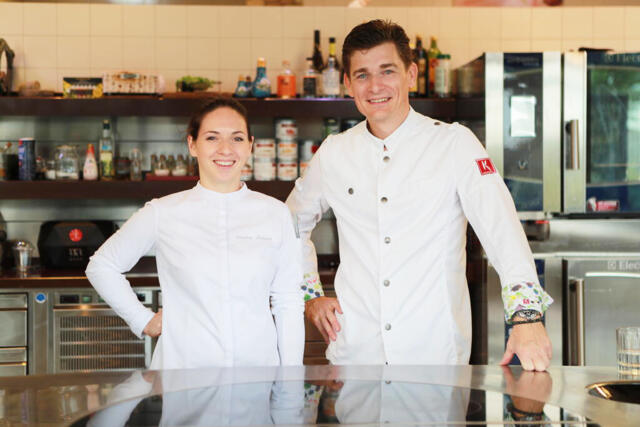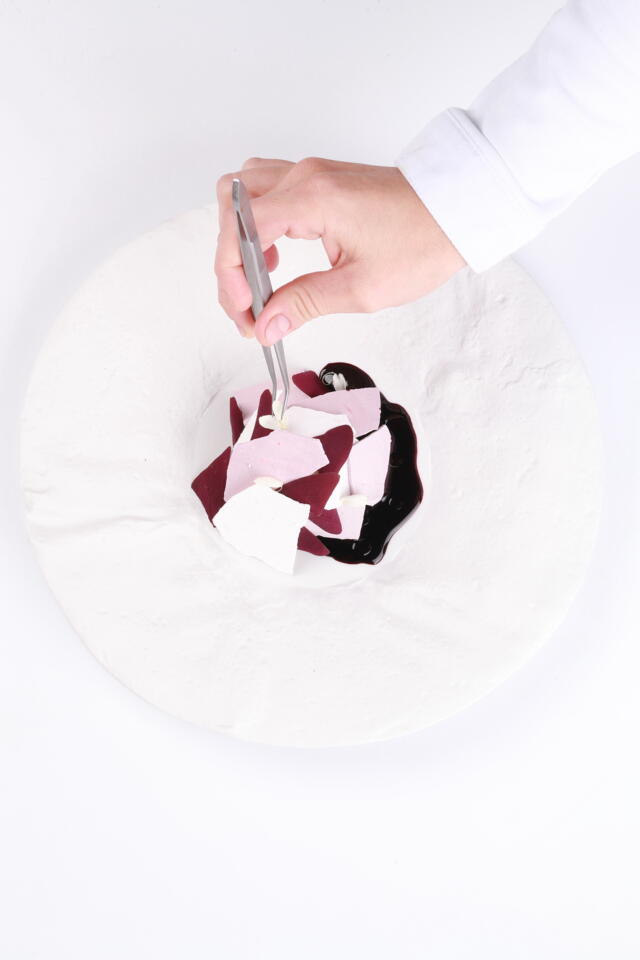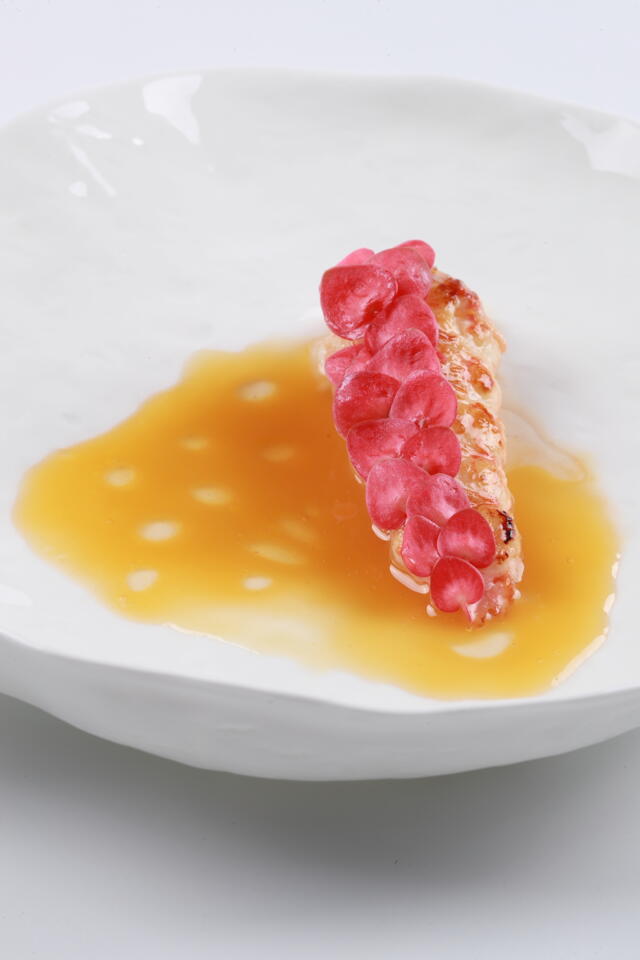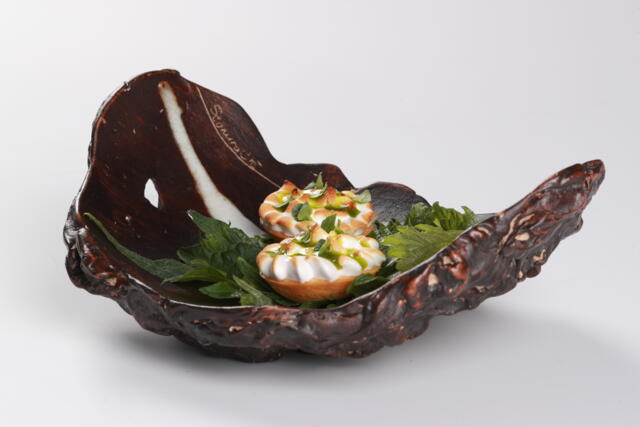
Culinary Arts with Sandra Scheidl
We had already made our acquaintance with Sandra Scheidl through Rolling Pin, but now culinary inspiration expert Marcel Thiele had the actual honor of welcoming her to the Koppert Cress greenhouse in Monster.
Centralize the product, in its pure form
We had already made our acquaintance with Sandra Scheidl through Rolling Pin, but now culinary inspiration expert Marcel Thiele had the actual honor of welcoming her to the Koppert Cress greenhouse in Monster. These two days of inspiration are centered around the world of plants and their creative use. A tour through the production process, showing how the seeds are sown, how the cresses grow and how they are packed, gives new insights. Sandra: “As a customer, you see the product and of course think about how it is produced, but you never see how much effort and work is behind it.” Marcel: “I think it makes a huge difference to set foot in the greenhouse. Just listening to the story might not inspire, but seeing it, tasting the products and feeling the atmosphere will; it is truly unique.”
The glass houses contain all sorts of (edible) plants, to provide customers with fresh produce year-round. One of our greenhouses is designed to grow a variety of flowers and edible leaves. Sandra: “I like to work with flowers and flowery tastes, together with various greens and vegetables. There are a lot of plants to explore, that is also why I use a variety of Koppert Cress products; they provide different flavours. I’m used to fresh products; my family and I used to grow a lot of plants in the garden ourselves. One thing I remember well are the fresh peas in the springtime.” Which coincidentally reminds us of our story about snow peas, by the way. “And I loved it when my mother was foraging wild blueberries; they have such a unique taste.”
They say travelling is the only thing you buy that makes you richer, which is also the case for Sandra. “The past few years, I decided to spend the free time that I had on travelling. I travelled through different countries in Southeast Asia; from Thailand, Laos, Cambodia and Indonesia, amongst others. Mostly to experience new cultures, to meet new people and see new things. Becoming inspired happens automatically when you go on a journey, since you emerge yourself into a completely new world. My cooking style could be described as a focus on the products itself, which is very important to me. Usually, I combine only 2 or 3 ingredients in a dish, so I experiment with textures, flavours and techniques to respect the core product.”

Practical experience, in various countries
There was no specific point in time that made Sandra decide to become a chef. “I’ve liked cooking since I was a small child, when I cooked a lot with my mother. On TV I watched cooking shows and slowly became more invested in the fine dining scene. I started buying books, read a lot, and just learned through trial-and-error. At some point I decided to go to culinary school, which was basically a tourism school. Culinary knowledge was part of the curriculum, but I felt like I was missing practical experience.
My first job was in Germany, a 5-star superior hotel, where I learned the basics. After that I went to Austria, where I worked as commis and chef de partie for Vitus Winkler who, at that time, had two togues by Gault & Millau. Now he has four. He was a big inspiration to me in terms of food waste reduction and the usage of herbs. I moved to London to work at Roux At Parliament Square and at restaurant Story, where I learned about modern English cuisine, but also Nordic cuisine. After my time in London, I returned to Austria to work for Simon Taxacher who received five togues and finally I became chef de partie at three Michelin starred restaurant Maaemo in Oslo. I’m now planning to open my own restaurant in Vienna.” We ask Sandra whether she has any advice for young chefs such as herself who aspire to succeed in the culinary world. “Ask questions, even if it seems annoying, because that is the best way to improve yourself. It is a good thing to be curious.” And the result of all these years of hard work? Winning the Young Wilde Award. “It was an honor for me to win, and at the same time I felt like this was proof for myself that I am going in the right direction.”
Marcel: “If there’s one thing you can change in the culinary world, what would it be?”. Sandra thinks for a minute and says: “I would say to reduce the usage of meat. I’m not vegetarian and am not planning on being vegetarian in the future, but especially in Europe we are using too much bad quality meat. I think it is fine to use meat, but at the same time it is important to treat it well. I really like how our grandparents, or our great grandparents, lived. They truly celebrated the times they could eat meat, like the Sunday roast.”

The art of plating, stimulate all senses
Of course, we’re interested to hear what products she is looking for. “I think I would love to see more flowers. Working with flowers is very exciting, not just because they are pretty, but because the flavours are so different, and it gives something warm to a dish. It is hard to describe, but it makes a dish round sometimes. One product we’ve tasted today was the BlinQ Blossom. It was not only pretty, but it reminded me of very light oyster. The texture was interesting too; it pops. To me, the dishes I create in the restaurant are like art to me. The flavour of the product is the most prominent thing, but it is also important that all your senses are part of it. You should be able to smell it, taste it and see it, as you venture through the complete experience.”
Website: Visit Sandra's website here
Instagram: sandrascheidl
